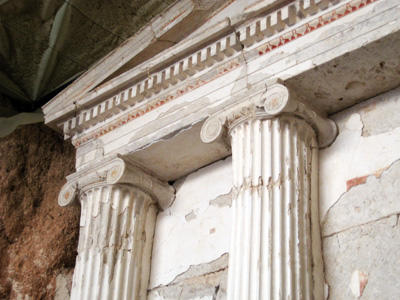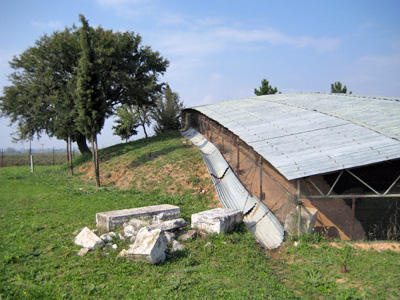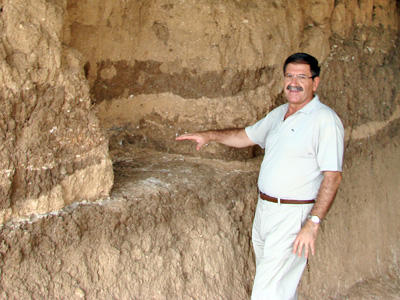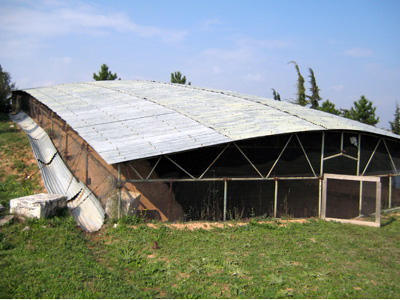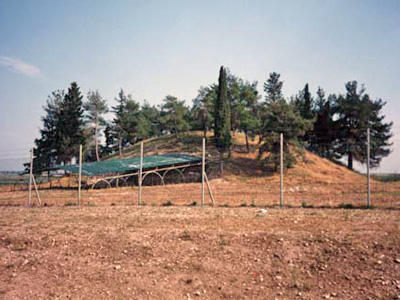Pella Macedonian Tombs
Constructed between the fourth and second centuries B.C., the tombs at Pella are important examples of Macedonian tomb building and also provide key information about the design and decoration of temples and other buildings of this period that are now lost. These tomb types, found across northern Greece, are typically subterranean, covered by a tumulus, and marked by a temple-like façade. The best-known examples are probably those at Vergina, 25 miles (40 kilometers) south of Pella. Excavation of the Pella area during the 1990s revealed six tombs, characteristic of the Macedonian civilization. They were family monuments, built of tufa, limestone, or other materials, dug into the natural ground, and then covered by an earthen mound on which was planted a grove of trees and flowers intended for use by the deceased and the gods of the netherworld. Since excavation in 1994, the structures have been protected by a temporary shelter that has been only partly effective at maintaining a stable microenvironment within the tomb. The result has been the steady deterioration of both the structure and its decorated surfaces.
2008 World Monuments Watch
This site is one of about 100 similar tomb complexes found in northern Greece,. In 2008 the tombs at Pella were successfully nominated to the World Monuments Watch by a non-governmental heritage organization, CICOP-Hellas. WMF recognized the need to understand more fully the processes involved in the deterioration of these tombs. WMF supported studies that provided information useful in determining conservation and presentation solutions for long term protection of the site. WMF supported the analysis of the cyclical changes of the microenvironment inside the tomb and temporary shelter, and how this affected the surviving materials. The tomb façades were conserved following the analysis, and proposals developed concerning the question of whether to make the shelters permanent.
The tombs represent an important era in the life of the historic City of Pella and their conservation provides opportunities for scholarly research to illuminate the artistic and cultural history of the region.

